I attended the first two days of the IATUL conference 2015, on Strategic partnerships for access and discovery, on July 6 and 7, 2015. It has been a while that I visited an IATUL conference (the last time was in Auckland, New Zealand, in 2008), so it was nice that I was invited by TIB Hannover to give a keynote and be able to attend the meeting in Hannover, Germany.
IATUL celebrated its 60th anniversary, and last year the General Assembly had decided that members from other university libraries than technical ones are now also welcome to IATUL membership. Though of course at this conference there were still mainly representatives from technical libraries (which I like, perhaps because it potentially can provide a more focused flavour, though in the end we all have the same challenges of course). Let me mention a few observations I made during these first two days:
- The obvious topic of open access was immediately addressed on the first day by Martin Hofmann-Apitius, who gave a very explicit case and reason why publishers should allow automatic text mining and by doing so would save the lives of cancer patients. In the panel afterwards he said that he thought scientific youth has been spoiled by Google: “We should come back from the hype, and define what solid-based literature search means”.
José Cotta (from CONNECT, Directorate-General of the European Commission), the second keynote speaker, phrased open science as a “democratisation” of science, and explained that free flow of data is necessary for a digital single market. He divided open science as follows: E-infrastructures for open science; Open access to research results & processes; Evidence-based policy making (Global systems science); and Public engagement (citizen science, crowdsourcing). Cotta further referred to the blogpost Moedas and Oetinger jointly wrote, and ended with his statement that we need to “catalyse a change in culture”. (I had already heard the update on the pilot for research data Cotta gave.) - Look out for the English translation of a public paper from ETH Zurich about the strategy for their collections (summary is already available). They identified the following four functions of scientific collections: Research; Teaching; Transfer of knowledge to the public; and Preservation of cultural heritage.
- Frank Seeliger (from Library TH Wildau, Germany) showed some nice visual presentations in the (digital or physical) library environment, or as he puts it: “making knowledge and science tangible”. They invite their professors to the library with this tagline: “Come to us to play”. Twice these two IATUL days a reference was made to the fluid library, i.e., the library can be where you want it. The tangible example at Wildau: every table in the library has an rfid reader, and when a book is put there, it can stay there, and be available (because it is localised).
- Simone Fühles-Ubach (Cologne University of Applied Sciences, Germany) explained a model for a library strategy, where the focus is on what the user wants to do instead of what they want. It is called the Openstrategies PRUB-model, because libraries run Projects to produce Results which customers and citizens Use to create Benefits.
- Wolf-Tilo Balke made it clear that libraries can (or should) connect information science and computer science, and combine this with their knowledge of the subject domain. He believes that this is necessary because otherwise people are lost in the information overflow, and “taking something out of the collection is the same as putting something on the 2nd page of Google”.
- I have made notes to take a better look at WorldWideScience.org who presented themselves as “a global science gateway comprised of national and international scientific databases and portals”. I must also investigate the impressive overview of research support services Hester Mountifield (University of Auckland, New Zealand) provided in her talk called “Through power of collaboration. How we increased our impact by helping researchers to increase theirs”. And I should have a better look at the circle (slide 20 in the linked pdf at this page) of the (physical) library functions Brian Irwin showed in his joint talk with Sharon L. Bostick.



So enough to get back to when I am in Delft. I did like the meeting and the talks with the attendees I had. The organisation was very “light”, which made it pleasantly informal, and there was also a lot of diversity in the topics, (perhaps some more focus in the total programme would have made it even better).
I have already given some attention to my own keynote via slideshare and twitter, but I would like to repeat very briefly what I feel is important for us librarians. We know why we find open access important, because we want everybody to have easy access to research findings. We should work together to reach this goal, and be Flexible, Assertive, Innovative and Realistic while doing this. If you want to know more, just reach out (and I’ll be there;-).
